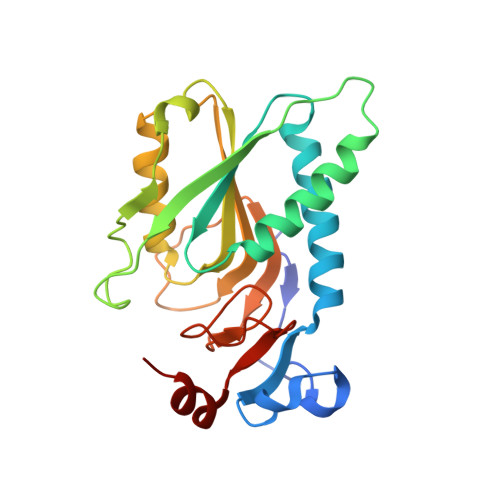Inhibition of hypoxanthine-guanine phosphoribosyltransferase by acyclic nucleoside phosphonates: a new class of antimalarial therapeutics.
Keough, D.T., Hockova, D., Holy, A., Naesens, L.M., Skinner-Adams, T.S., Jersey, J., Guddat, L.W.(2009) J Med Chem 52: 4391-4399
- PubMed: 19527031
- DOI: https://doi.org/10.1021/jm900267n
- Primary Citation of Related Structures:
3GEP, 3GGC, 3GGJ - PubMed Abstract:
The purine salvage enzyme hypoxanthine-guanine-xanthine phosphoribosyltransferase (HGXPRT) is essential for purine nucleotide and hence nucleic acid synthesis in the malaria parasite, Plasmodium falciparum. Acyclic nucleoside phosphonates (ANPs) are analogues of the nucleotide product of the reaction, comprising a purine base joined by a linker to a phosphonate moiety. K(i) values for 19 ANPs were determined for Pf HGXPRT and the corresponding human enzyme, HGPRT. Values for Pf HGXPRT were as low as 100 nM, with selectivity for the parasite enzyme of up to 58. Structures of human HGPRT in complex with three ANPs are reported. On binding, a large mobile loop in the free enzyme moves to partly cover the active site. For three ANPs, the IC(50) values for Pf grown in cell culture were 1, 14, and 46 microM, while the cytotoxic concentration for the first compound was 489 microM. These results provide a basis for the design of potent and selective ANP inhibitors of Pf HGXPRT as antimalarial drug leads.
Organizational Affiliation:
The School of Chemistry and Molecular Biosciences, The University of Queensland, Brisbane, 4072 QLD, Australia.

















